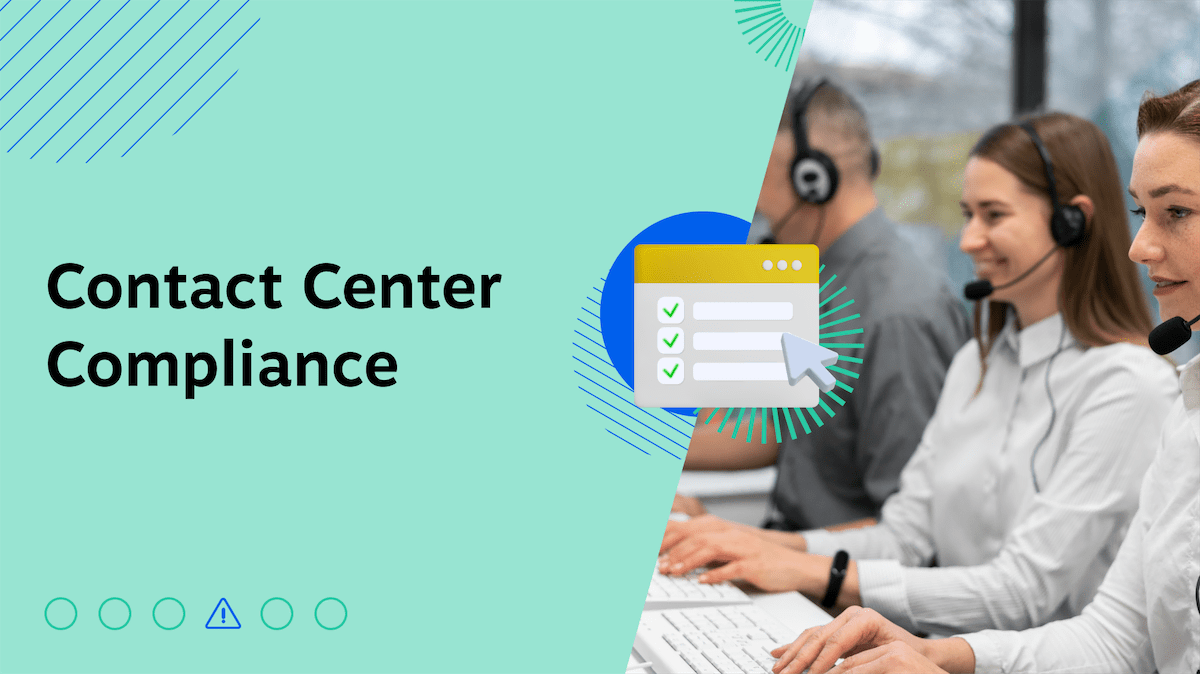Exposing your contact center to poor governance, lax processes, or inadequate technology isn’t just risky but devastating. Expect hefty fines, lasting reputational damage, and regulatory action that, in extreme cases, could bring your operations to a complete standstill. Contact center compliance is a critical business function, not a check-the-box exercise, and you need to get it right.
Fortunately, understanding the regulatory framework and deploying the right strategies and technologies can help minimize these risks. Modern contact center capabilities keep you up-to-date and ready to manage the complexities of operating across multiple industries and jurisdictions.
We’ll discuss the critical areas of call center compliance, the consequences of mistakes, and key strategies for keeping your contact center secure and adhering to key regulations.
What Is Contact Center Compliance?
Contact center compliance means ensuring that every aspect of a contact center’s operations complies with relevant laws, regulations, industry standards, and internal company policies. It’s a comprehensive approach that governs how agents interact with customers, how sensitive data (such as payment card details or health information) is collected, processed, and stored, how outbound communications are handled, and how technology is used securely.
Compliance aims to protect consumers — preserving their privacy, ensuring data security, preventing fraudulent or harassing practices, and ensuring fair treatment. It also serves to protect the company itself from the financial, legal, and reputational risks associated with non-compliance.
Contact center compliance involves implementing specific procedures, using secure technologies, and ongoing training to ensure that every interaction and process meets the required standards across jurisdictions and industries.
Why Does Contact Center Compliance Matter?
Before discussing the regulations, let’s understand why compliance is necessary for contact centers. Non-compliance has concrete and serious consequences:
- Financial penalties: Regulatory authorities can impose significant fines. For example, TCPA violations can cause penalties per call or text message. HIPAA violations have resulted in million-dollar settlements. PCI DSS violations can translate to fines from credit card companies and acquiring banks, and increased transaction fees.
- Reputational damage: Data breaches or discriminatory practices undermine customer trust, which is hard to gain and easy to lose. Negative press can have a lasting impact on brand perception and customer loyalty.
- Operational disruption: Compliance violations can lead to mandatory operational changes, suspension of activities (such as payment processing), or, in the worst case, forced closures. Using compliant call center software can help mitigate these disruptions by ensuring adherence to regulations.
- Legal action: Besides the associated fines, non-compliance can lead to costly individual or class action lawsuits by affected customers. Training call center agents to follow compliance protocols is crucial to avoid such legal issues.
Regulatory compliance within call centers is crucial as compliant software and policies enhance operational efficiency and mitigate risks.
What Are the Different Types of Compliance in Contact Centers?

Contact centers operate at the intersection of multiple regulations. Here are some of the most critical ones:
HIPAA: Health Insurance Portability and Accountability Act
HIPAA is essential for all organizations that handle protected health information (PHI). It’s not only a best practice for healthcare call centers, but also a legal requirement. It applies to healthcare providers, health plans, healthcare clearinghouses, and business associates who process electronic healthcare transactions.
HIPAA requirements for contact centers:
- Carefully verify your patients’ identities before discussing or accessing protected health information.
- Transfer and store protected health information securely, adhering to HIPAA’s administrative safeguards (policies, procedures, training), physical safeguards (facility access, workstation security), and technical safeguards (access controls, encryption, audit trails).
- Obtain valid patient consent/authorization before using or disclosing protected health information for non-standard purposes.
- Enter Business Associate Agreements (BAAs) with providers who process protected health information.
Note: HIPAA generally doesn’t apply to life insurers, workers’ compensation carriers, most schools, or certain state agencies, like child protective services unless they perform covered functions.
PCI DSS: Payment Card Industry Data Security Standard
The PCI DSS applies to any business that accepts, processes, stores, or transmits credit card information.
Here are some PCI DSS requirements for contact centers:
- Never store sensitive authentication data (such as CVV codes) after authorization, even if encrypted. Minimize storing full card numbers and use secure payment processing systems and applications.
- Implement controls that meet the 12 core PCI DSS requirements. These cover areas such as building and maintaining secure networks and systems, protecting stored cardholder data, maintaining a vulnerability management program, implementing strict access control measures, regularly monitoring and auditing networks, and adhering to an information security policy.
- Train agents on secure payment handling and fraud prevention.
There are four PCI DSS levels your contact center may be subject to, which relate to the number of card transactions you process each year:
- Level 1: Over 6 million transactions
- Level 2: 1 to 6 million transactions
- Level 3: 20,000 to 1 million transactions
- Level 4: Under 20,000 transactions (Compliance requirements apply to all levels, but validation methods differ).
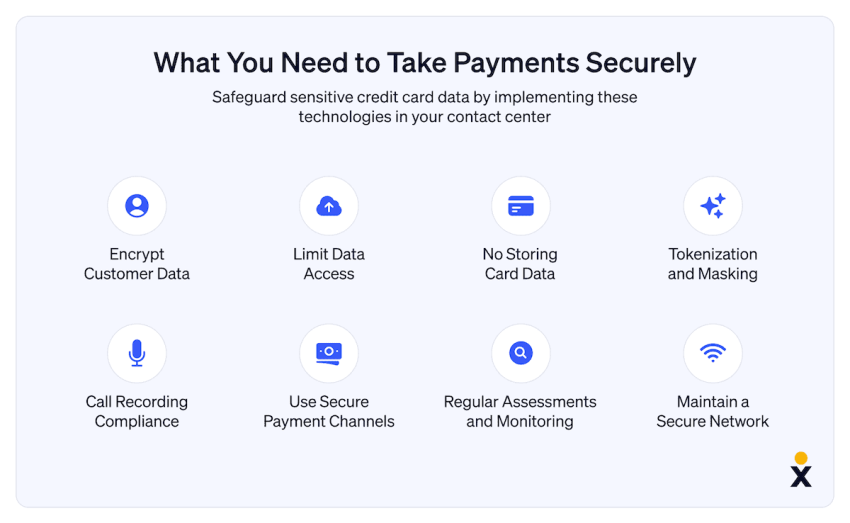
👀 Further Reading: Collecting Credit Card Payments Securely with Nextiva’s Advanced IVR
TCPA: Telephone Consumer Protection Act
Important for call centers that make outbound calls or send text messages, especially when using automated technology. The Telephone Consumer Protection Act (TCPA) shapes industry standards and compliance practices within call centers, ensuring consumer protection from intrusive sales tactics.
TCPA requirements for call centers:
- Consent: Obtain the necessary consent before contacting consumers. This means prior express written consent for marketing messages via automatic dialing systems or prerecorded voice messages, which require specific disclosures and express consent. For informational messages, prior express consent may be sufficient.
- DNC lists: Strictly adhere to internal “Do Not Call” lists and the National DNC Registry.
- Automatic dialing systems: Familiarize yourself with the evolving definitions and restrictions for the use of automatic telephone dialing systems (ATDS).
- Calling times: Limit outbound calls to permitted times (typically 8 a.m. to 9 p.m. in the recipient’s time zone).
- Identification: Identify the caller and provide their contact information.
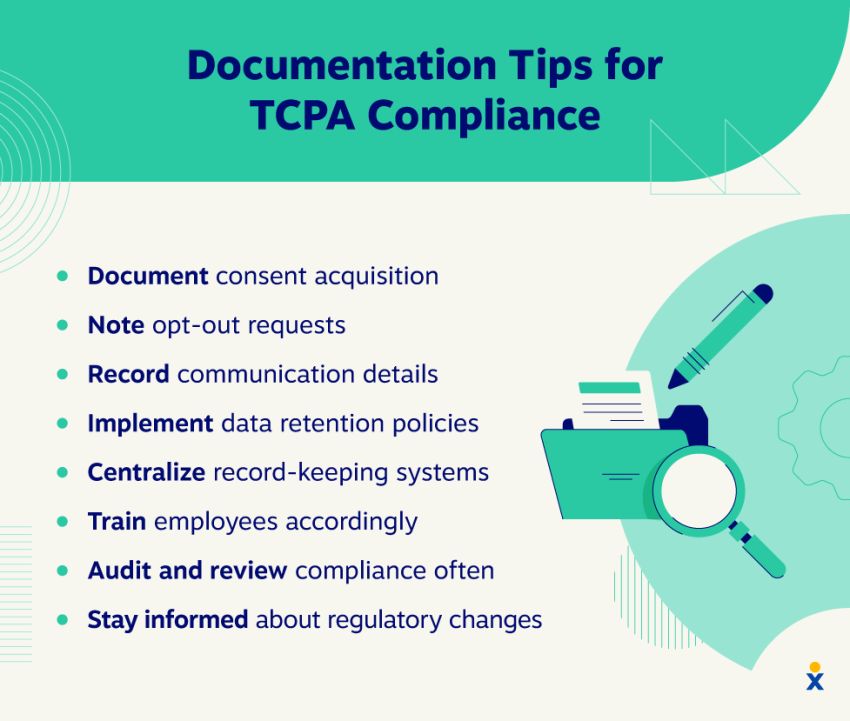
Data privacy laws (GDPR, CCPA/CPRA, and others)
Data privacy laws are gaining traction around the world, regulating the collection, use, and protection of personal data. The General Data Protection Regulation (GDPR) imposes strict requirements for consent and data handling, particularly emphasizing its relevance for call centers and the implications of non-compliance in terms of legal and reputational repercussions. Similar laws apply in many other regions like CCPA/CPRA for California residents.
What do you need to collect and protect customer data?
- Lawful basis: Have a valid reason for collecting and processing personal data (e.g., consent, contract necessity).
- Transparency: Inform individuals how their data is used (privacy notices).
- Data subject rights: Have processes to honor requests for access, correction, deletion, portability, and objection to processing personal data.
- Consent management: Obtain explicit, informed consent where required, particularly for sensitive data or marketing.
- Data minimization: Collect only the data necessary for the specified purpose.
- Security: Implement appropriate technical and organizational measures to protect call center data.
- Breach notification: Have procedures for detecting and reporting data breaches to regulators and affected individuals within specific timeframes.
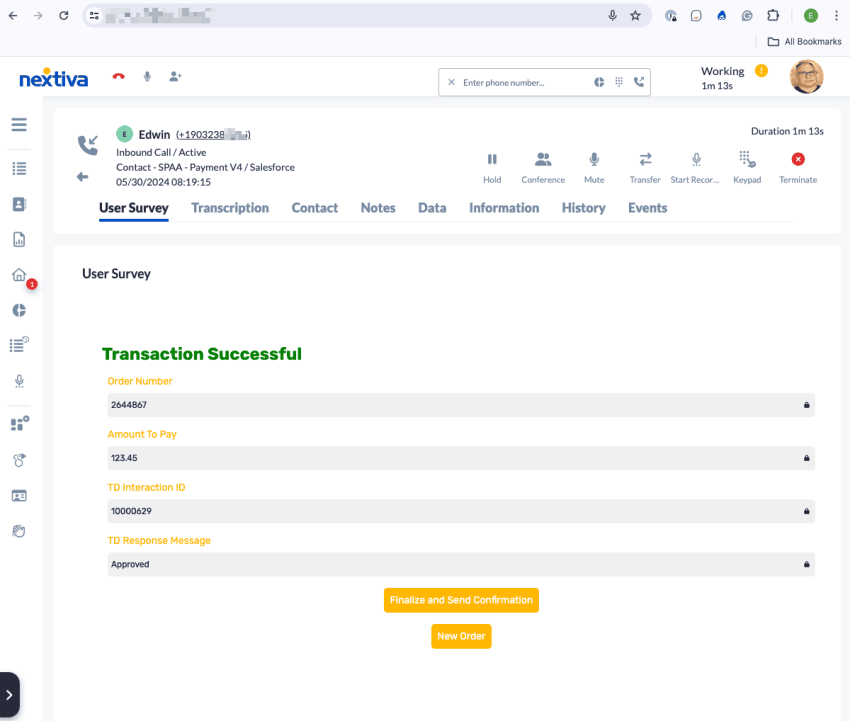
FINRA: Financial Industry Regulatory Authority
FINRA applies to contact centers in FINRA-regulated firms (e.g., broker-dealers). FINRA’s goal is to protect investors and ensure market integrity.
FINRA requirements for contact centers:
- Maintain accurate and complete customer records.
- Avoid misleading statements or unauthorized investment advice.
- Follow strict record-keeping and communication supervision regulations (including archiving emails, chats, and call recordings related to brokerage activities).
- Ensure agents are properly licensed if discussing or transacting securities.
Non-discrimination compliance
Mandatory for all businesses, ensuring fair and equal treatment regardless of protected characteristics.
Non-discrimination compliance requires businesses to:
- Provide equal service without bias based on race, color, religion, sex, national origin, age, disability, or genetic information.
- Avoid discriminatory language, assumptions, or practices.
- Uphold company policies on diversity, equity, and inclusion.
- Ensure accessibility for customers with disabilities, complying with laws like the ADA (Americans with Disabilities Act), which may require supporting TTY/TDD or relay services.
Note: Specific industries (e.g., utilities, education) or geographic regions may have additional compliance requirements.
Fair Debt Collection Practices Act (FDCPA)
The Fair Debt Collection Practices Act (FDCPA) is a federal law designed to protect consumers from abusive, unfair, and deceptive debt collection practices. This regulation is crucial for call centers that engage in debt collection activities on behalf of creditors.
The FDCPA prohibits debt collectors from engaging in certain practices, including:
- Making false or misleading statements: Debt collectors must provide accurate information about the debt and avoid deceptive practices.
- Using abusive or harassing language: Collectors are prohibited from using threats, obscene language, or any form of harassment.
- Making excessive or repeated calls: Repeatedly calling consumers to annoy or harass them is strictly forbidden.
- Contacting consumers at inconvenient times or places: Collectors must respect consumers’ privacy and avoid calling at odd hours or inappropriate locations.
- Failing to provide clear and accurate information about the debt: Collectors must identify themselves and provide details about the debt, including the amount owed and the creditor’s name.
For call centers, compliance with the FDCPA involves:
- Provide clear and accurate debt information: Ensure all communications with consumers are transparent and truthful.
- Obtaining consent from consumers before making calls: Always seek permission before initiating contact.
- Respecting consumers’ requests to stop calls: If a consumer requests no further contact, the call center must honor this request.
- Maintaining accurate records of consumer interactions: Keep detailed records of all communications to ensure compliance and provide evidence if needed.
Adhering to the FDCPA helps call centers protect consumers’ rights and avoid legal repercussions.
How To Maintain Contact Center Compliance
Knowing the compliance rules is just the first step. The real work lies in integrating them into your daily routine and corporate culture. Here’s how to integrate compliance into your contact center:
1. Make compliance everyone’s job
Maintaining compliance isn’t the sole responsibility of one person or department — it requires a team effort. Your agents are on the front lines and must understand and follow procedures, handle data carefully, and adhere to approved scripts and disclosures. Adhering to compliance regulations and maintaining network security is crucial in the context of a contact center’s operations to protect sensitive customer information and preserve customer trust.
Line managers play a key role in monitoring calls, training their teams on compliance issues, intervening when issues arise, and ensuring policy is followed. Behind the scenes, your IT department sets up and manages technical safeguards like firewalls and access controls to keep systems secure.
Management sets the tone, ensures compliance is prioritized, allocates the necessary resources, and develops core policies. And if you have a dedicated compliance officer or team, they lead the program, manage audits, keep everyone up-to-date on changing regulations, and oversee training efforts.
2. Keep your team trained and informed
Knowledge is your first line of defense. Your training program should cover more key topics: the specific regulations that affect your work (such as HIPAA, PCI DSS, TCPA, or GDPR), your company’s data protection rules, proper customer identity verification, protocols for handling sensitive information, and, most importantly, how to identify and report potential problems.
Don’t forget to explain the “why” — the consequences of mistakes. Training isn’t a one-time exercise. Start with a thorough onboarding session, then schedule regular refreshers — perhaps annually or semi-annually— and be sure to update as rules change.
To ensure training is sustainable, use methods like quizzes, role-playing, and insights from call center monitoring. And as more teams work remotely, ensure your remote agents receive the same level of training and fully understand the specific policies for their environment, like maintaining a secure and private workspace at home.

3. Build strong data security habits
Protecting sensitive customer data and sensitive customer information is crucial to avoid potential breaches and legal ramifications.
Basic measures like number masking or encrypting data are important, but robust security goes further. This includes implementing strict access controls so employees only access the information they need to do their jobs (often referred to as the “least privilege principle”), segregating different network areas to contain potential problems, regularly scanning for vulnerabilities, and applying patches promptly.
Have procedures for securely deleting data that is no longer needed — whether digital files or old paper records. Don’t neglect your partners; carefully review the security and compliance practices of any third-party providers you work with, such as software vendors or outsourced call centers.
Make sure you have solid contracts in place, such as Business Associate Agreements when processing healthcare data or Data Processing Agreements (DPAs) for GDPR compliance. For remote teams, implement security measures like VPNs, secure Wi-Fi connections, the exclusive use of company-approved equipment and software, and rules for handling data outside the office, including maintaining privacy.
4. Handle every customer interaction with care
Every customer conversation is an opportunity to demonstrate compliance or risk noncompliance. Have reliable methods for verifying customer identity before disclosing sensitive account information. Relying only on the inbound phone number (ANI) isn’t enough.
Securely managing customers’ data through Privacy Enhancing Computation (PEC) allows contact centers to extract valuable insights while maintaining data privacy and security, enhancing decision-making capabilities.
Train your agents thoroughly on when and how to obtain consent from your customers — whether recording a call, storing their data, sending marketing messages, or processing payments.
Use clear language so your customers understand what they’re agreeing to. Also, establish processes for handling customer requests about their data, such as requests to view or delete their data under laws like the GDPR or CCPA.
Using standardized wording or scripts for required disclosures promotes consistency and ensures nothing important is missed. For example, outlining why a call is being recorded or how payment data is being secured builds trust and complies with requirements.
5. Keep good records and check your work
Good documentation and regular monitoring are key to contact center compliance. Customer interactions should be accurately documented according to your policies. Automating data capture can help reduce errors here.
Establish data retention policies that specify how long you must keep certain information based on regulations and business requirements and, equally important, how you will securely delete or destroy it afterward. Control who has access to confidential records and logs and document any changes made.
Regularly review your performance through internal audits or self-assessments to ensure compliance. Depending on your industry and regulations (e.g., PCI DSS for higher transaction volumes), you may also require regular external audits by independent third parties. These audits review your policies, procedures, technical facilities, and employees’ daily practices.
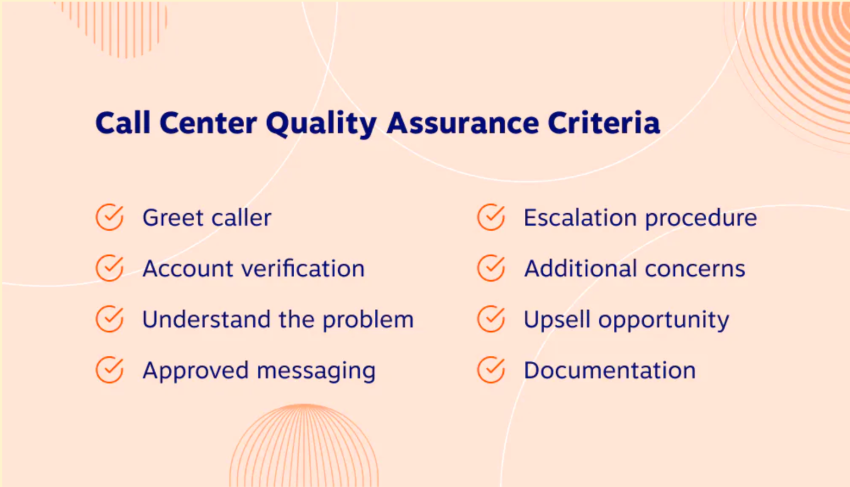
How Contact Center Technology Keeps Your Business Compliant
Modern contact center technology offers excellent tools to help you maintain compliance. Call recording, for example, provides you with an objective record for quality assurance, employee training, conflict resolution, and proof of compliance. Some platforms, like Nextiva, offer features like a pause/resume function during recording, which is helpful when capturing payment data for PCI compliance.
Tools like disposition tracking help agents categorize calls consistently, making it easier to identify trends that could indicate compliance risk or additional training needs. Agent workflows and scripting capabilities guide agents step-by-step through complex processes, ensuring consistency and reducing the risk of missing important compliance steps.
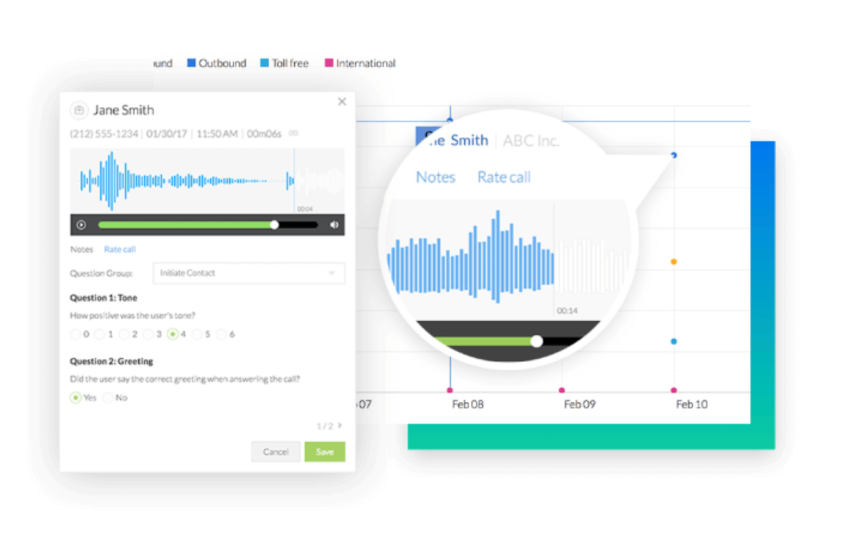
AI also plays an important role, providing real-time coaching cues when an agent deviates from the script or mishandles sensitive data. It supports call recording auditing by flagging problematic interactions for human review faster than manual reviews.
Of course, technology isn’t a magic wand. These tools need to be set up correctly, managed properly, and require human oversight. Carefully vet your technology vendors to ensure their platforms meet security and compliance standards.
For instance, platforms geared toward compliance, like Nextiva, offer features tailored to regulations like HIPAA (such as disabling certain voicemail features to protect health information and providing necessary Business Associate Agreements) or PCI DSS (like secure payment handling tools and recording controls), showing how technology can purposefully support your compliance efforts.
Building Better Contact Center Compliance
Maintaining your contact center’s compliance is an ongoing commitment. Continuous training, solid processes, proper documentation, and smart use of technology are critical pieces of the puzzle.
So, where should you begin?
- Start by taking stock: Figure out exactly which regulations apply to your business and identify where your current practices might have gaps through a risk assessment. It’s wise to consult with legal or compliance experts to make sure you’re interpreting the rules correctly and your policies are solid.
- Develop a formal compliance program: Document your policies, procedures, who’s responsible for what, and your training plans. When investing in technology, choose tools designed with security and compliance in mind, and always check out your vendors. Ensure your compliance policies include fair debt collection practices to adhere to the FDCPA.
- Continuously improve: Work to make compliance awareness a natural part of your company culture, something everyone understands and takes responsibility for. Keep monitoring your performance, conduct regular audits, update your training, and stay ready to adapt as regulations and business needs change.
A proactive approach is the best way to protect your customers, safeguard your reputation, and keep your business running smoothly.
Maintain Compliance With Nextiva’s Secure Platform
Training, record keeping, and constant learning are crucial to maintaining contact center compliance. Without these in place, you could be opening yourself up to more risks than you bargained for. Contact center platforms like Nextiva provide secure and reliable communications to every customer regardless of industry.
We limit some functionality for HIPAA-compliant accounts to protect private patient data. This helps businesses stay in compliance without making any changes.
In recent times, we’ve adjusted the following features:
- Visual voicemail: disabled
- Nextiva App: disabled voicemail replay functionality
- Voicemail to email or text: disabled
- vFAX: disabled functionality allowing the sending of faxes from an email (you can still view incoming faxes using a secure email link or by logging into your portal)
Nextiva also executes a Business Associate Agreement that addresses our covered services and states the privacy, security, and breach notification rules required for business associates under HIPAA.
Thanks to advanced call recording, our robust feature set also enables PCI DSS compliance. You can record all calls for training and monitoring and use the Pause/Resume function so card details aren’t recorded.
You can add specific data security measures and agent workflows because of our intuitive interactive voice recognition builder, ANI, and plenty of other features designed to keep you on track.
The call center solution teams love.
See why top brands use Nextiva to handle calls at scale. Easy to use. Fast setup.

















 VoIP
VoIP 

